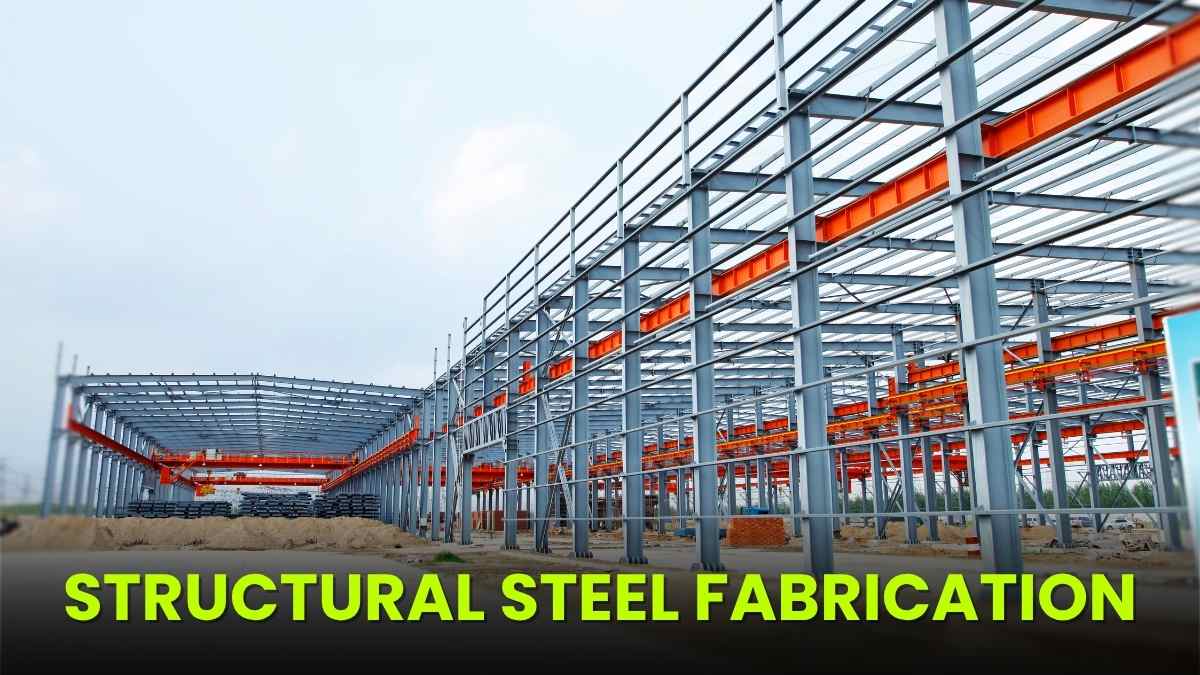India’s growth is accelerating in the steel customization and structural steel fabrication. Structural steel fabrication is important for construction as it provides durability, flexibility, and strength to infrastructure projects. The article covers everything about the structural steel fabrication and its growth in India.
The structural steel fabrication is used in large industrial projects, such as manufacturing facilities, transportation, and energy plants. One of the strong points of structural steel is that we can customize it as per our needs, hence it is used in specific site solutions and construction.
The fabrication of steel for any complex to easy design or shape has increased its demand. Structural steel fabrication is emerging as a key factor in modern construction. The structural steel fabrication market in India is valued at $6.19 billion in 2025 and will grow further.
What is Structural Steel Fabrication?
Structural Steel Fabrication means transforming raw steel into finished components used in the frameworks of large structures, such as beams, tubes, and columns. The process involves cutting, bending, welding, and transforming the raw steel to specific dimensions, or desired shapes etc.
The fabrication technique for the steel depends on the project requirements, project engineering, and other factors. However, here is the general process for the structural steel fabrication:
- Engineering and Designing: The fabrication involves the engineer’s design or blueprint that will be used for the component making, such as weight, load capacity, and other requirements.
- Material: After the design of the component is done based on the requirement, the process involves the selection of structural steel based on the project’s need, as we have steel available in many thicknesses and grades.
- Shaping and cutting: Once we have the material, the fabrication will move to cutting and shaping the raw steel using high-precision techniques, such as plasma cutting, sawing, and others.
- Bending: Once the shaping is done, the fabricators will use the machinery to bend the shaped steel into the required form as per the project’s needs and form the product.
- Welding and Assembling: After all the components are ready and assembled, welding will be done to join the pieces.
- Following quality compliance: Once we have formed the product, the fabricators will follow the quality compliance as per the industry standard.
- Protection: Afterwards, the fabricators will coat the product with paint or other materials that will protect the product from corrosion and enhance its durability.
What’s the growth of Structural Steel Fabrication in India?
According to reports, the structural steel fabrication market in India is divided based on the product type, such as construction products and others. The Indian market of structural steel fabrication is growing; let’s see its current value and facts:
- The current value of the Indian structural steel fabrication is around $6.91 to $8 billion in 2025, and it is forecasted to grow to $12 billion in 2030 with a growth of 7.67% CAGR.
- The resort says the light section of the structural steel fabrication is leading the industry by 40.33% in 2024, whereas the heavy sections are expected to be expanded by 2030.
- Last year, Indian structural steel fabrication was used 68% in the construction projects, such as in bridges, buildings, etc.
- Due to structural steel fabrication, the welding industry had 28.35% revenue last year, and machinery is also advancing for proper growth.
- The West India revenue in 2024 was around 42.91%, which is the highest revenue in the country.
How does the government support this industry?
The Indian government supports the growth of the structural steel fabrication industry and construction segment through the following initiatives and programs:
- Production Linked Scheme:
- The government provides incentives to eligible Indian companies to boost the production of high-quality steel products.
- The government aimed to encourage and promote the specialty steel transformation and manufacturing to reduce the import of the product from 2025 to 2030.
- The government has launched the third round of the scheme to boost domestic production and attract more investment into this segment.
- For the PLI 2.0, the government has outlayed ₹6,322 crores to promote domestic manufacturing and advance the techniques for better precision.
- PM GatiShakti:
- The PM GatiShakti has driven the pipe and steel demand across various infrastructure projects in India.
- The PM Gati Shakti scheme has supported large infrastructure projects, such as metro rails, roads, etc.
- The scheme helps the industry by boosting the project demand, assures transparency, and integrates the digital platform for planning and project operation.
What’s the current trend in steel fabrication?
With the technological advancement and new advanced techniques, here are the future trends you should look out for the structural steel fabrication:
- Automation and Robotics: Automation and robotics are evolving the way we follow the steel fabrication, as it is much faster and precise. The use of robotic arms and automated machines is getting popular for steel fabrication.
- Building Information Modeling (BIM): BIM used for construction is getting popular as it enables collaboration between engineers, architects, and contractors, and is beneficial for seamless data transfer.
- Sustainable practices: With climate change affecting infrastructure projects, it is important that the structural steel fabrication also follows sustainable practices that will add to the durability and strength of the project.
- Prefabrication: Prefabrication is getting popular in the industry as it shortens the project timelines. The process involves ready-to-assemble parts or an industry that is following this trend.
The Structural Steel fabrication market is growing in India, and it’s projected to expand more and grow with the government initiatives and technological advancements.



